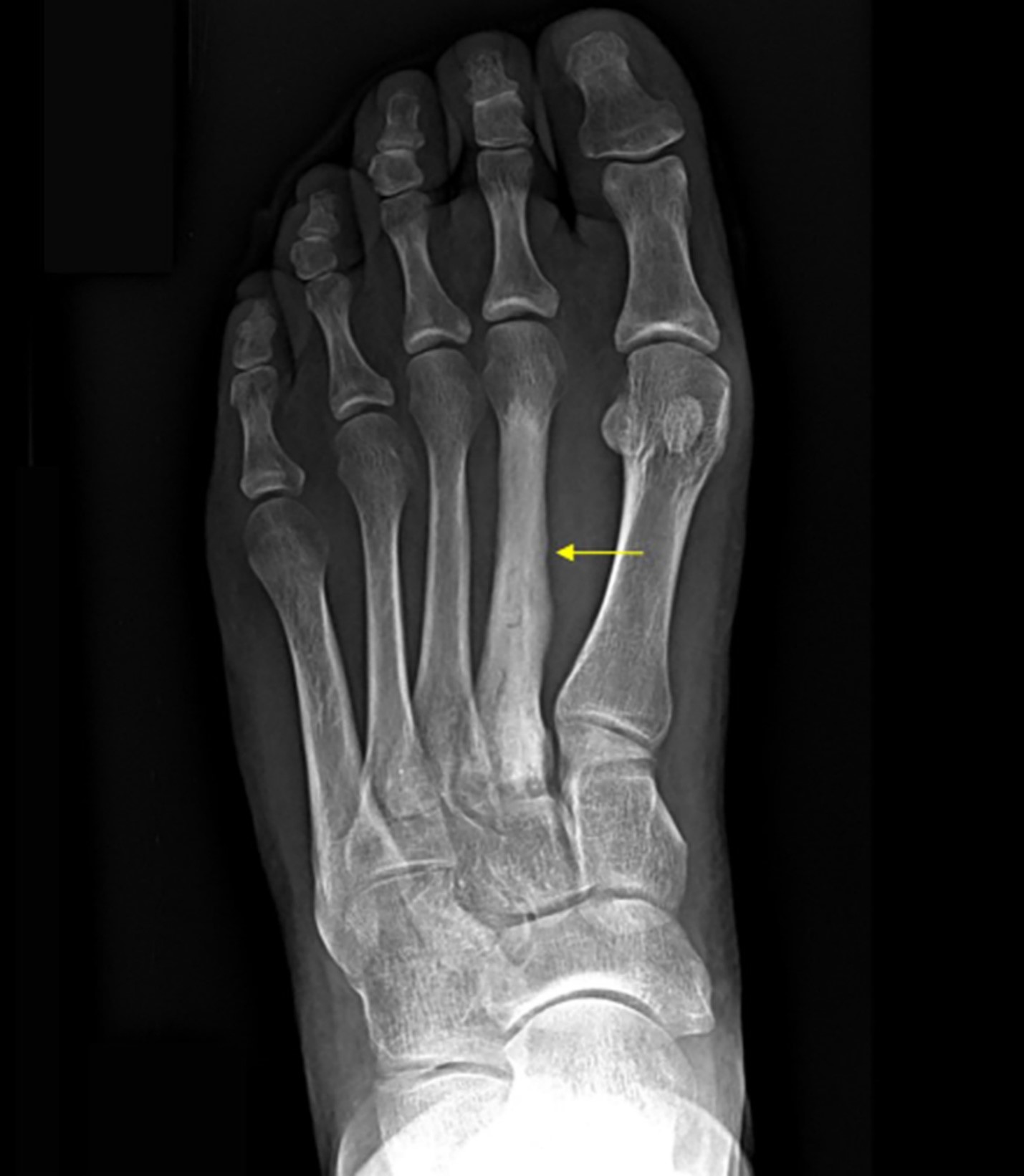Stress Fracture
Side Bar
Stress Fracture

A stress fracture is a very small crack in the bone. This can happen from repetitive trauma and is commonly seen in athletes – particularly long-distance runners. Stress injuries can be found in the shin bone, foot, heel, hip and lower back
Stress fractures can occur anywhere there is overuse, but they’re most commonly found in the lower extremity as a result of impact and weight bearing activities. The most common bone is the shin bone or tibia (20% to 75% of all stress fractures — often running injuries). Stress fractures can also occur in the foot. The foot is made up of several small bones. The bones running to the toes are called metatarsals. There are five metatarsals in each foot. It is most common for a stress fracture to happen in the second and third metatarsals.
• Practicing incorrect training or sport technique.
• Having too rapid of a training program or volume of activity without a gradual break-in period.
• Changing the surface of exercise .
• Running on a track or road with sloped surface.
• Using poor equipment or improper footwear
• Doing repetitive activity in certain high-impact sports, such as:
- Long-distance running (tibia, hip).
- Basketball.
- Tennis
- Track and field.
- Dance (feet, low back).
• Having a low vitamin D level.
SYMPTOMS
- Pain, swelling or aching at the site of fracture.
- Tenderness on the bone.
- Pain that begins after starting an activity and then resolves with rest.
- Pain that’s present throughout the activity and does not go away after the activity has ended.
- Pain which occurs while at rest, during normal activity or with everyday walking.
- Pain which is worse with hopping on one leg or an inability to shift weight/hop on affected leg/foot.
DIAGNOSIS
X-Rays: Your doctor may order an X-Ray to look for a fracture. However, a stress fracture can be difficult to see on an X-Ray because the bone often appears normal and the small cracks can’t be seen on the image.Bone scan: A bone scan may be used to see stress fractures that cannot be seen on an X-Ray.
MRI: When your doctor needs very detailed images of the injury, an MRI may be used.
MANAGEMENT
Stop any activities which may be contributing to the injury. If a stress fracture is not treated, the fracture may get worse. It can heal improperly, lead to arthritis or may even need surgery.Treatments your doctor may recommend can include:
- Stopping the activity that is causing pain.
- Applying an ice pack to the injured area.
- Resting for roughly two to eight weeks
- Taking nonsteroidal anti-inflammatory medicines to help relieve pain and swelling.
- Using protective footwear to reduce stress on your foot or leg.
- Using crutches to keep weight off your foot or leg until the bone heals.
Patient may require surgery depending upon cause and severity.
